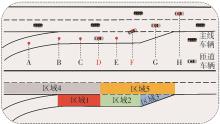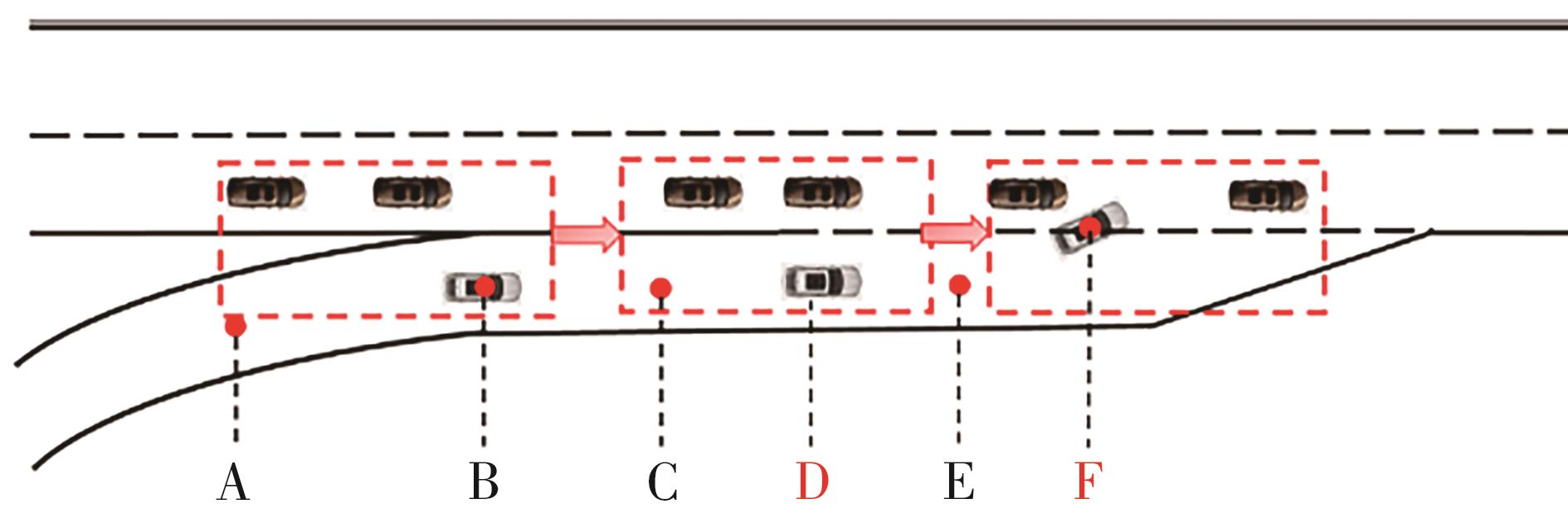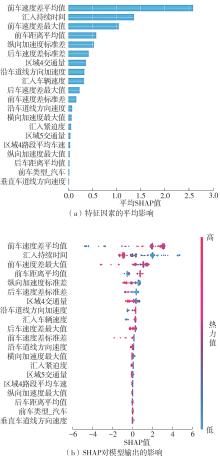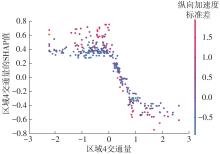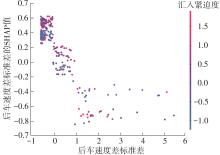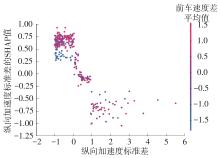Journal of South China University of Technology(Natural Science Edition) ›› 2025, Vol. 53 ›› Issue (8): 50-60.doi: 10.12141/j.issn.1000-565X.240437
• Intelligent Transportation System • Previous Articles Next Articles
An Investigation into Expressway Merging Behavior and Safety Based on ExiD Data
WEN Huiying1, HUANG Kunhuo1, CHEN Zhe2, ZHAO Sheng1, HU Yuqing2, HUANG Junda1
- 1.South China University of Technology,Guangzhou 510640,Guangdong,China
2.Guangdong E -Serve United Co. ,Ltd. ,Guangzhou 510640,Guangdong,China
-
Received:2024-08-29Online:2025-08-25Published:2025-01-17 -
Contact:黄俊达(1995—),男,博士生,主要从事交通规划、交通仿真研究。 E-mail:cthuangjunda@mail.scut.edu.cn -
About author:温惠英(1965—),女,教授,博士生导师,主要从事交通规划、交通安全研究。E-mail: hywen@scut.edu.cn -
Supported by:the National Natural Science Foundation of China(52372329)
CLC Number:
Cite this article
WEN Huiying, HUANG Kunhuo, CHEN Zhe, ZHAO Sheng, HU Yuqing, HUANG Junda. An Investigation into Expressway Merging Behavior and Safety Based on ExiD Data[J]. Journal of South China University of Technology(Natural Science Edition), 2025, 53(8): 50-60.
share this article
Table 2
Model variable selection"
| 变量 | 变量类型 | 含义 | 变量 | 变量类型 | 含义 | ||
|---|---|---|---|---|---|---|---|
| 分类 | 是否存在冲突 | 连续 | 沿车道线方向加速度 | ||||
| 连续 | 区域4交通量 | 连续 | 垂直车道线方向加速度 | ||||
| 连续 | 区域4交通密度 | 分类 | 前车类型(小客车标记为1;小货车标记为2;大卡车标记为3) | ||||
| 连续 | 区域4路段平均车速 | 连续 | 汇入过程与前车速度差平均值 | ||||
| 连续 | 区域5交通量 | 连续 | 汇入过程与前车速度差标准差 | ||||
| 连续 | 区域5交通密度 | 连续 | 汇入过程与前车速度差最大值 | ||||
| 连续 | 区域5路段平均车速 | 连续 | 汇入过程与前车距离平均值 | ||||
| 分类 | 汇入车辆类型(小客车标记为1;小货车标记为2;大卡车标记为3) | 连续 | 汇入过程与前车车头时距平均值 | ||||
| 连续 | 汇入车辆长度 | 分类 | 后车类型(小客车标记为1;小货车标记为2;大卡车标记为3) | ||||
| 连续 | 汇入车辆宽度 | 连续 | 汇入过程与后车速度差平均值 | ||||
| 连续 | 汇入车辆速度 | 连续 | 汇入过程与后车速度差标准差 | ||||
| 连续 | 汇入过程横向加速度标准差 | 连续 | 汇入过程与后车速度差最大值 | ||||
| 连续 | 汇入过程纵向加速度标准差 | 连续 | 汇入过程与后车距离平均值 | ||||
| 连续 | 汇入过程横向加速度最大值 | 连续 | 汇入过程与后车车头时距平均值 | ||||
| 连续 | 汇入过程纵向加速度最大值 | 连续 | 汇入持续时间 | ||||
| 连续 | 沿车道线方向速度 | 连续 | 汇入紧迫度 | ||||
| 连续 | 垂直车道线方向速度 | ||||||
| [1] | 查文贵 .高速公路合流区交通冲突预测与安全评价研究[D].重庆:重庆交通大学,2022. |
| [2] | 阎莹,盛彦婷,袁华智,等 .高速公路出入口区域行车风险评价及车速控制[J].交通运输工程学报,2011,11(2):90-96. |
| YAN Ying, SHENG Yanting, YUAN Huazhi,et al .Driving risk evaluation and speed control in passageway areas of freeway[J].Journal of Traffic and Transportation Engineering,2011,11(2):90-96. | |
| [3] | WANG X, HADIUZZAMAM M, QIU T Z,et al .Sensitivity analysis of freeway capacity at a complex weaving segment[C]∥Proceeding of the CICTP 2014:Safe,Smart,and Sustainable Multimodal Transportation Systems.Virginia:ASCE,2014:596-608. |
| [4] | 谢济铭,秦雅琴,彭博,等 .多车道交织区车辆跟驰行为风险判别与冲突预测[J].交通运输系统工程与信息,2021,21(3):131-139. |
| XIE Jiming, QIN Yaqin, PENG Bo,et al .Risk discrimination and conflict prediction of vehicle-following behavior in multi-lane weaving sections[J].Journal of Transportation Systems Engineering and Information Techno-logy,2021,21(3):131-139. | |
| [5] | 温惠英,黄坤火,赵胜 .基于机器学习的高速公路大型货车追尾风险预测[J].中国安全科学学报,2023,33(9):173-180. |
| WEN Huiying, HUANG Kunhuo, ZHAO Sheng,et al .Prediction of rear-end collision risk of large trucks based on machine learning[J].China Safety Science Journal,2023,33(9):173-180. | |
| [6] | 翁楚滨 .多车环境下智能车辆换道风险预测与轨迹规划方法[D].广州:华南理工大学,2023. |
| [7] | 王伟 .基于车辆轨迹重构的高速公路合流区换道冲突计算方法[D].广州:华南理工大学,2022. |
| [8] | 杜胜品,马永锋 .基于冲突点的交织区复杂度量化研究[J].交通运输系统工程与信息,2014,14(1):53-58. |
| DU Shengpin, MA Yongfeng .Quantitative analysis on complexity of weaving segment with conflicts[J].Journal of Transportation Systems Engineering and Information Technology,2014,14(1):53-58. | |
| [9] | TANAKA S, HASEGAWA N, IIZUKA D,et al .Evaluation of vehicle control algorithm to avoid conflicts in wea-ving sections under fully-controlled condition in urban expressway[J].Transportation Research Procedia,2017,21:199-207. |
| [10] | WANG L, ABEL-ATY M, SHI Q,et al .Real-time crash prediction for expressway weaving segments[J].Transportation Research Part C:Emerging Technologies,2015,61:1-10. |
| [11] | YUAN J, ABEL-ATY M, CAI Q,et al .Investigating drivers’ mandatory lane change behavior on the weaving section of freeway with managed lanes:a driving simulator study[J].Transportation Research Part F:Tra-ffic Psychology and Behaviour,2019,62:11-32. |
| [12] | LI S, XIANG Q, MA Y,et al .Crash risk prediction modeling based on the traffic conflict technique and a microscopic simulation for freeway interchange merging areas[J].International Journal of Environmental Research and Public Health,2016,13(11):1157. |
| [13] | GU X, ABDEL-ATY M, XIANG Q,et al .Utilizing UAV video data for in-depth analysis of drivers’ crash risk at interchange merging areas[J].Accident Analysis & Prevention,2019,123:159-169. |
| [14] | MOERS T, VATER L, KRAJEWSKI R,et al .The exid dataset:a real-world trajectory dataset of highly interactive highway scenarios in germany[C]∥Procee-ding of the 2022 IEEE Intelligent Vehicles Symposium (Ⅳ).[S.L.]:IEEE,2022:958-964. |
| [15] | 叶云涛 .考虑交通行为特性的高速公路交通冲突预测模型研究[D].西安:长安大学,2022. |
| [16] | 张方方,王长君,王俊骅 .城市快速路匝道合流区车辆交互行为模式[J].中国公路学报,2022,35(9):66-79. |
| ZHANG Fangfang, WANG Changjun, WANG Junhua .Vehicle interaction patterns at on-ramp merging area of urban expressway[J].China Journal of Highway and Transport,2022,35(9):66-79. | |
| [17] | MINDERHOUD M M, BOVY P H L. Extended time-to-collision measures for road traffic safety assessment[J].Accident Analysis & Prevention,2001,33(1):89-97. |
| [18] | BONELA S R, KADALI B R .Review of traffic safety evaluation at T-intersections using surrogate safety measures in developing countries context[J].IATSS Research,2022,46(3):307-321. |
| [19] | 高阳 .对多重共线性检测指标的一些研究[D].兰州:兰州大学,2019. |
| [20] | 王兆华,刘杰,王博,等 .融合机器学习与SHAP值算法的居民需求响应个体异质性因素挖掘与应用研究[J].系统工程理论与实践,2024,44(7):2247-2259. |
| WANG Zhaohua, LIU Jie, WANG Bo,et al .Research on mining and applications of individual heterogeneity factors in resident demand response by integra-ting machine learning and SHAP value algorithm[J].Systems Engineering-Theory & Practice,2024,44(7):2247-2259. | |
| [21] | 曲大义,戴守晨,陈意成,等 .基于轨迹数据的车辆博弈切出及汇入行为建模[J/OL].吉林大学学报(工学版).[2024-03-05].. |
| QU Dayi, DAI Shouchen, CHEN Yicheng,et al .Modeling of vehicle game cut-out and merging behavior based on trajectory data[J/OL].Journal of Jilin University (Engineering and Technology Edition).[2024-03-05].. | |
| [22] | 李传华,吴昊,孙一帆 .基于交通冲突的山区高速公路可变限速控制方法[J].长安大学学报(自然科学版),2018,38(5):154-161. |
| LI Chuanhua, WU Hao, SUN Yifan .Variable speed limit method of mountainous expressway based on traffic conflicts index[J].Journal of Chang’an University (Natural Science Edition),2018,38(5):154-161. |
| [1] | WEN Huiying, MA Zhaoliang, ZHAO Sheng, WU Liming, HUANG Kunhuo. Analysis of Factors Affecting Truck Accidents on Mountainous Freeways [J]. Journal of South China University of Technology(Natural Science Edition), 2025, 53(7): 93-103. |
| [2] | LIU Wenshuo, ZHONG Mingfeng, ZHOU Bo, LÜ Fangzhou. Research on Temperature Model of Steel Box Girder of High-Speed Railway Cable-Stayed Bridge Based on Machine Learning [J]. Journal of South China University of Technology(Natural Science Edition), 2025, 53(6): 25-33. |
| [3] | GONG Zhongwen, XIONG Ergang, WANG Wenxiang, et al. Shear Strength Calculation of RC Beams Without Shear Reinforcement Based on Crack Sliding Model [J]. Journal of South China University of Technology(Natural Science Edition), 2024, 52(5): 114-126. |
| [4] | ZHAO Jiandong, XU Huiling, LÜ Xing, et al. Recognition Model of Highway Toll Evasion Behavior Considering Cost-Sensitivity [J]. Journal of South China University of Technology(Natural Science Edition), 2024, 52(5): 10-19. |
| [5] | DONG Chunjiao, LU Yuxiao, MA Sheqiang, et al.. Analyzing and Modeling of Multi-Class E-Bikes Violation Behaviors at Signalized Intersection [J]. Journal of South China University of Technology(Natural Science Edition), 2024, 52(1): 83-89. |
| [6] | LIN Peiqun, GONG Minping, ZHOU Chuhao. User Portrait Method of Freeway Freight Car for Risk Identification of Freight Transportation [J]. Journal of South China University of Technology(Natural Science Edition), 2023, 51(6): 1-9. |
| [7] | ZHOU Chuhao, LIN Peiqun, YAN Mingyue. Traffic Data Imputation Based on Self-Supervised Learning [J]. Journal of South China University of Technology(Natural Science Edition), 2023, 51(4): 101-114. |
| [8] | DONG Ping, WEI Shuyang, LIU Mingbo. Scheduling Strategies for Electric Vehicle Participation in Electricity Markets Under Multi-Network Collaboration [J]. Journal of South China University of Technology(Natural Science Edition), 2023, 51(12): 83-94. |
| [9] | GUO Miao, ZHAO Xiaohua, YAO Ying, et al. Study on Accident Risk Based on Driving Behavior and Traffic Operating Status [J]. Journal of South China University of Technology(Natural Science Edition), 2022, 50(9): 29-38. |
| [10] | WANG Xiaofei, LI Siyu, CHEN Mi, et al. Influence of the Combination Equilibrium of Horizontal and Crest Vertical Curves on Highway Safety [J]. Journal of South China University of Technology(Natural Science Edition), 2022, 50(7): 76-84. |
| [11] | SONG Jian, WANG Wenlong, LI Dong, et al. Injection Molding Part Size Prediction Method Based on Stacking Ensemble Learning [J]. Journal of South China University of Technology(Natural Science Edition), 2022, 50(6): 19-26. |
| [12] | ZHAO Xiaohua, ZHU Hongzhen, BIAN Yang, et al. Research on Self-Regulation Behavior of Elderly Drivers Based on Extended TPB Model [J]. Journal of South China University of Technology(Natural Science Edition), 2022, 50(3): 28-37. |
| [13] | LIN Peiqun XIA Yu ZHOU Chuhao. Freeway Travel Time Prediction Based on Spatial and Temporal Characteristics of Road Networks [J]. Journal of South China University of Technology(Natural Science Edition), 2021, 49(8): 1-11. |
| [14] | JIA Ruo, DAI Shenghong, HUANG Ni, et al. Literature Review on Traffic Congestion Identification Methods [J]. Journal of South China University of Technology (Natural Science Edition), 2021, 49(4): 124-139. |
| [15] | LU Yue FU Xinsha. Analysis of Urban Landscape and Traffic Safety Based on Street View Images [J]. Journal of South China University of Technology (Natural Science Edition), 2021, 49(10): 22-30. |
| Viewed | ||||||
|
Full text |
|
|||||
|
Abstract |
|
|||||
